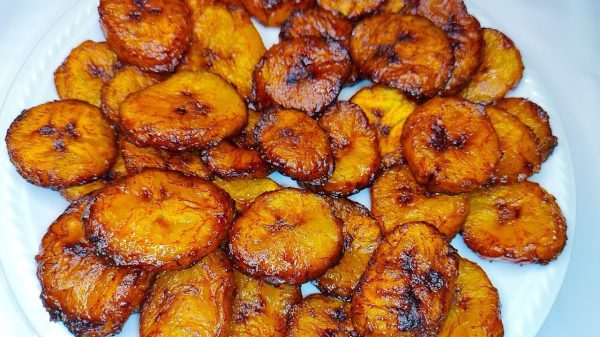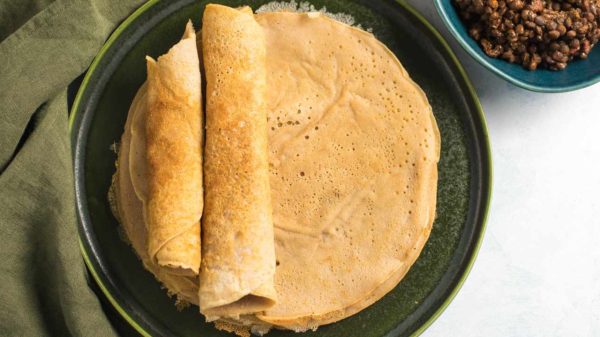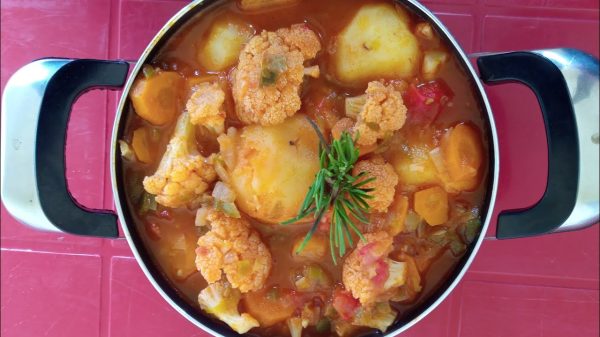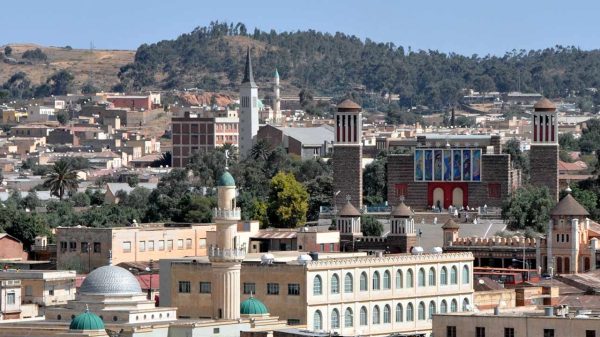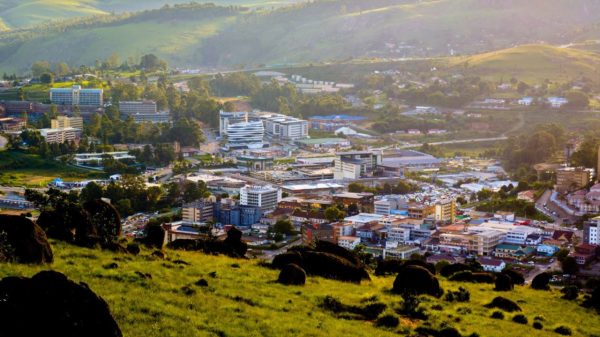Situated in West Africa, Niger’s culinary scene offers a taste as vibrant as its culture.
The nation’s dishes skillfully incorporate staple ingredients such as millet, rice, and beans, creating satisfying and flavorful experiences. Often served with rich sauces and stews, these meals reflect local resources and cherished traditions. While perhaps less globally famous than some neighboring cuisines, Nigerien food provides an authentic and delicious glimpse into West African life.
Get ready to discover seven dishes from Niger that promise a memorable culinary journey.
1. Djerma Stew (Miyan Kuka)
Miyan Kuka, also known as Djerma Stew, is a traditional dish cherished among the Hausa and Djerma communities in Niger. Its defining ingredient is powdered baobab leaves, known locally as kuka, which impart a distinctive green hue and slightly tangy flavor to the stew. The preparation begins by simmering meats such as beef or goat, often accompanied by smoked fish, in a rich broth infused with onions, tomatoes, ginger, and spices like ground crayfish and African locust beans (dawadawa). Once the meat is tender, the baobab leaf powder is gradually stirred in, thickening the stew and adding its characteristic taste. Miyan Kuka is traditionally served with tuwo shinkafa (mashed rice) or tuwo masara (cornmeal), making it a hearty and nutritious meal. This dish not only satisfies the palate but also offers health benefits, as baobab leaves are rich in vitamins A and C, calcium, and antioxidants. Miyan Kuka exemplifies the resourcefulness of Nigerien cuisine, utilizing locally available ingredients to create a flavorful and wholesome dish.
2. Dambou
Dambou, also known as Dambu, is a festive dish originating from the Zarma and Songhai communities in southwestern Niger. It is traditionally prepared during special occasions such as weddings and communal gatherings. The base of Dambou consists of steamed grains like millet, rice, or wheat semolina, which are then mixed with boiled moringa leaves—a nutrient-rich green known for its health benefits. The mixture is enhanced with chopped onions, chili peppers, salt, and oil, and sometimes ground peanuts or broth are added for extra flavor. Dambou is often served alongside grilled meat or fish, providing a balanced and satisfying meal. The dish’s versatility allows for variations based on regional preferences and available ingredients. Dambou not only showcases the culinary creativity of Nigerien cuisine but also reflects the importance of communal dining and celebration in the country’s culture.
3. Jollof Rice
Jollof Rice is a beloved West African dish that has been embraced in Nigerien cuisine. This one-pot dish features long-grain rice cooked in a flavorful tomato-based sauce, which includes ingredients like onions, red bell peppers, garlic, ginger, and a blend of spices such as curry powder, thyme, and bay leaves. The addition of protein, such as chicken, beef, or fish, enhances the dish’s richness. Jollof Rice is a staple at social gatherings and festive occasions, symbolizing unity and shared enjoyment. Its vibrant red color and aromatic flavors make it a favorite among locals and visitors alike. While variations exist across West Africa, the Nigerien version maintains the core elements that make Jollof Rice a cherished dish throughout the region.
4. Fari Masa
Fari Masa, also known as Farin Masa, is a traditional Nigerien snack that holds a special place in the country’s culinary landscape. These deep-fried rice cakes are made from a fermented batter of rice or wheat flour, mixed with yeast, sugar, salt, and water. The fermentation process gives the batter a slightly sour taste and a light, airy texture. Once the batter is prepared, it is scooped into small portions and fried until golden brown, resulting in a crispy exterior and soft interior. Fari Masa is often enjoyed with sweet accompaniments like honey or sugar, or savory sauces for a spicy kick. Commonly sold by street vendors, especially in the evenings, Fari Masa serves as a popular snack or breakfast item. Its simplicity and delightful taste make it a beloved treat across Niger.
5. Dounguouri Soko (Bean Stew)
Dounguouri Soko is a hearty bean stew that reflects the fusion of local ingredients and culinary influences in Niger. The dish combines tender pieces of lamb with white beans, bell peppers, tomatoes, onions, and garlic, all simmered together to create a rich and flavorful stew. The addition of tomato paste enhances the depth of flavor, while seasonings like salt and pepper bring balance to the dish. Dounguouri Soko is often served with rice, flatbread, or millet, and a dollop of mayonnaise is sometimes added for creaminess. This stew bears resemblance to the French cassoulet but is uniquely Nigerien in its preparation and taste. Dounguouri Soko exemplifies the adaptability of Nigerien cuisine, incorporating diverse ingredients to create a comforting and satisfying meal.
6. Palm-Nut Soup
Palm-Nut Soup, also known as Banga Soup, is a traditional dish enjoyed in various parts of West Africa, including Niger. The soup is made from the extract of palm fruit, which provides a rich, nutty flavor and a distinctive red color. Ingredients such as smoked fish, chopped spinach, and assorted meats like beef or goat are commonly added, along with spices like cayenne pepper, ground crayfish, and bouillon powder. The soup is simmered until the flavors meld together, resulting in a hearty and flavorful broth. Palm-Nut Soup is typically served with rice or swallow foods like tuwo and fufu, making it a filling and nutritious meal. The dish’s popularity across the region highlights the shared culinary traditions of West African countries.
7. Camel Meat
Camel meat is a significant part of the diet in Niger, particularly in the northern regions where camels are more prevalent. The meat is known for its leanness and slightly gamey flavor, similar to coarse beef. Rich in vitamins, especially B-complex, and minerals like iron, calcium, and phosphorus, camel meat is both nutritious and flavorful. It is prepared in various ways, including camel burgers, camel karahi, and camel curry. One popular preparation is Shinwari Karahi, where camel meat is cooked with tomatoes, garlic, ginger, green chilies, and a blend of spices to create a savory and aromatic dish. Camel meat is often consumed medium-rare to retain its tenderness and flavor. Its inclusion in Nigerien cuisine reflects the adaptability and resourcefulness of the country’s culinary practices.
Nigerien cuisine offers a diverse array of dishes that reflect the country’s rich cultural tapestry. From hearty stews and flavorful rice dishes to unique snacks and meats, the food of Niger provides a culinary experience that is both satisfying and culturally enriching. Whether you’re exploring the bustling markets of Niamey or enjoying a home-cooked meal in a rural village, these traditional dishes offer a taste of Niger’s vibrant food culture.
Subscribe to our Newsletter
Stay updated with the latest trends in African Pop Culture!







